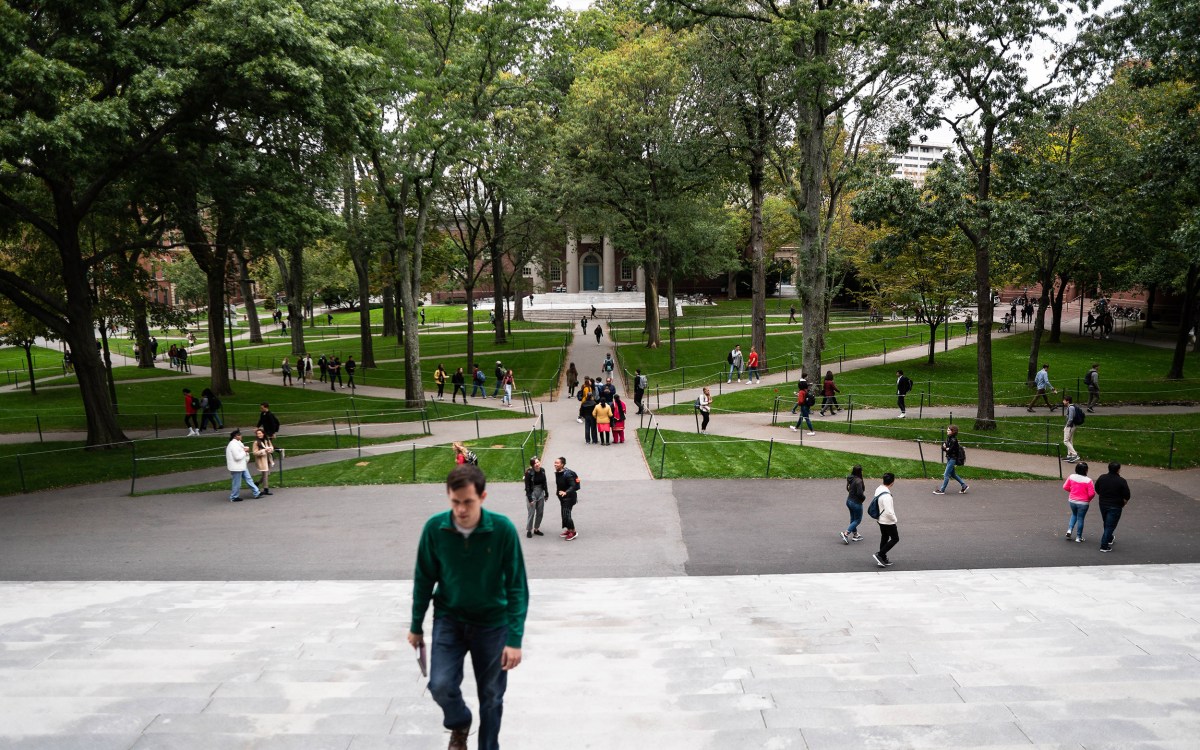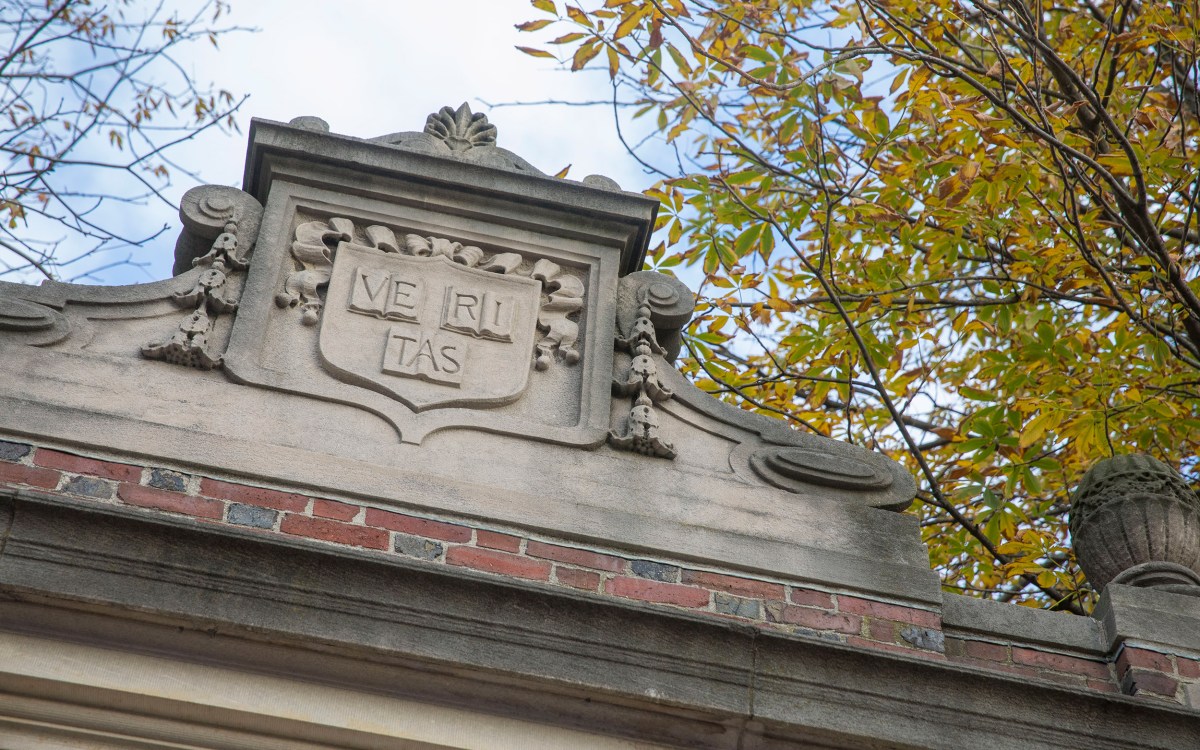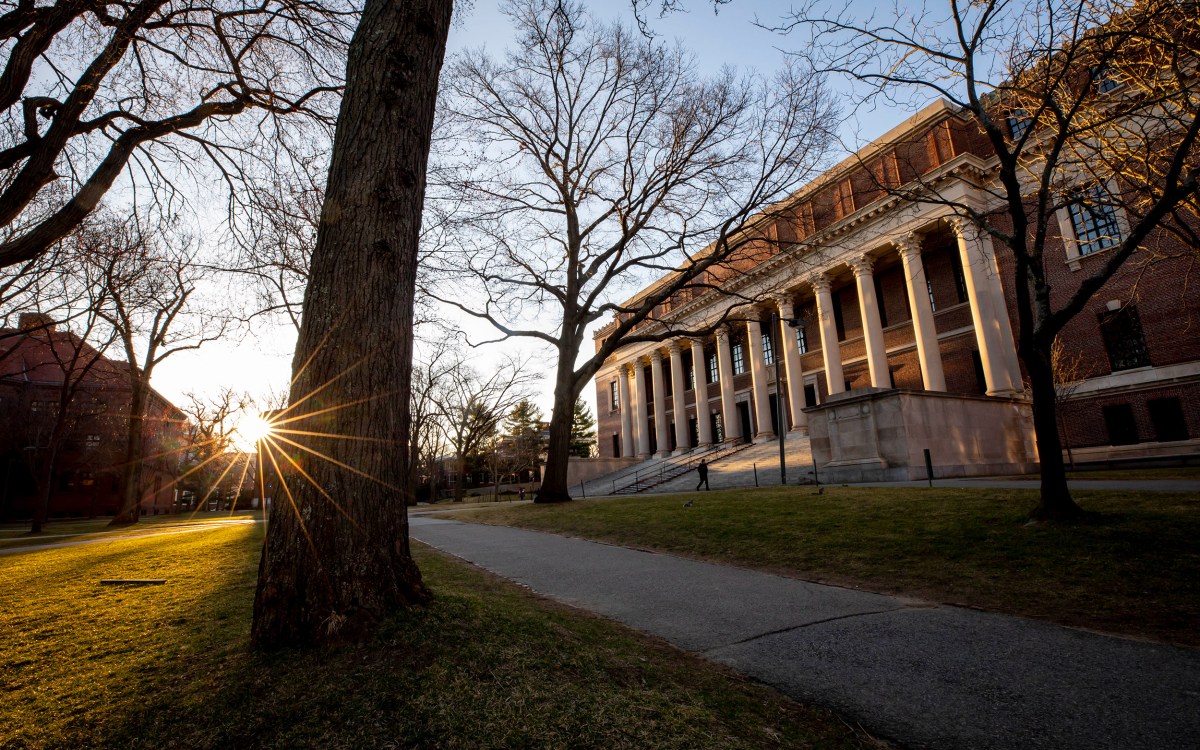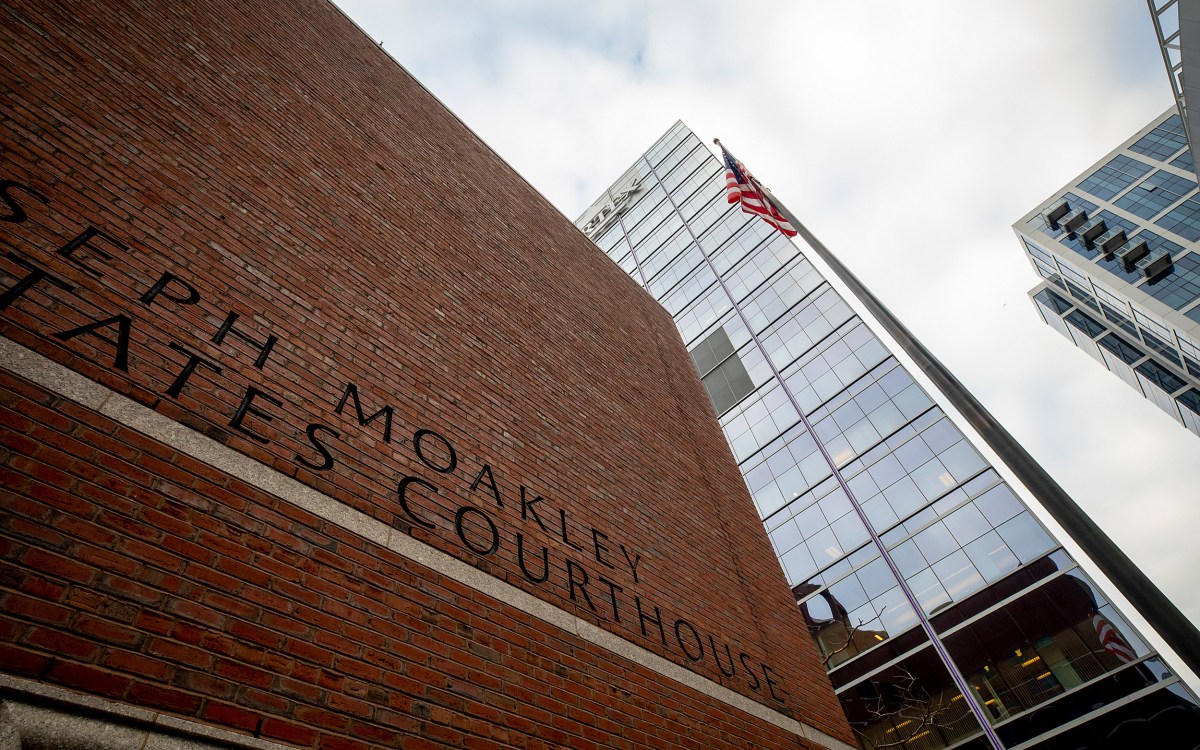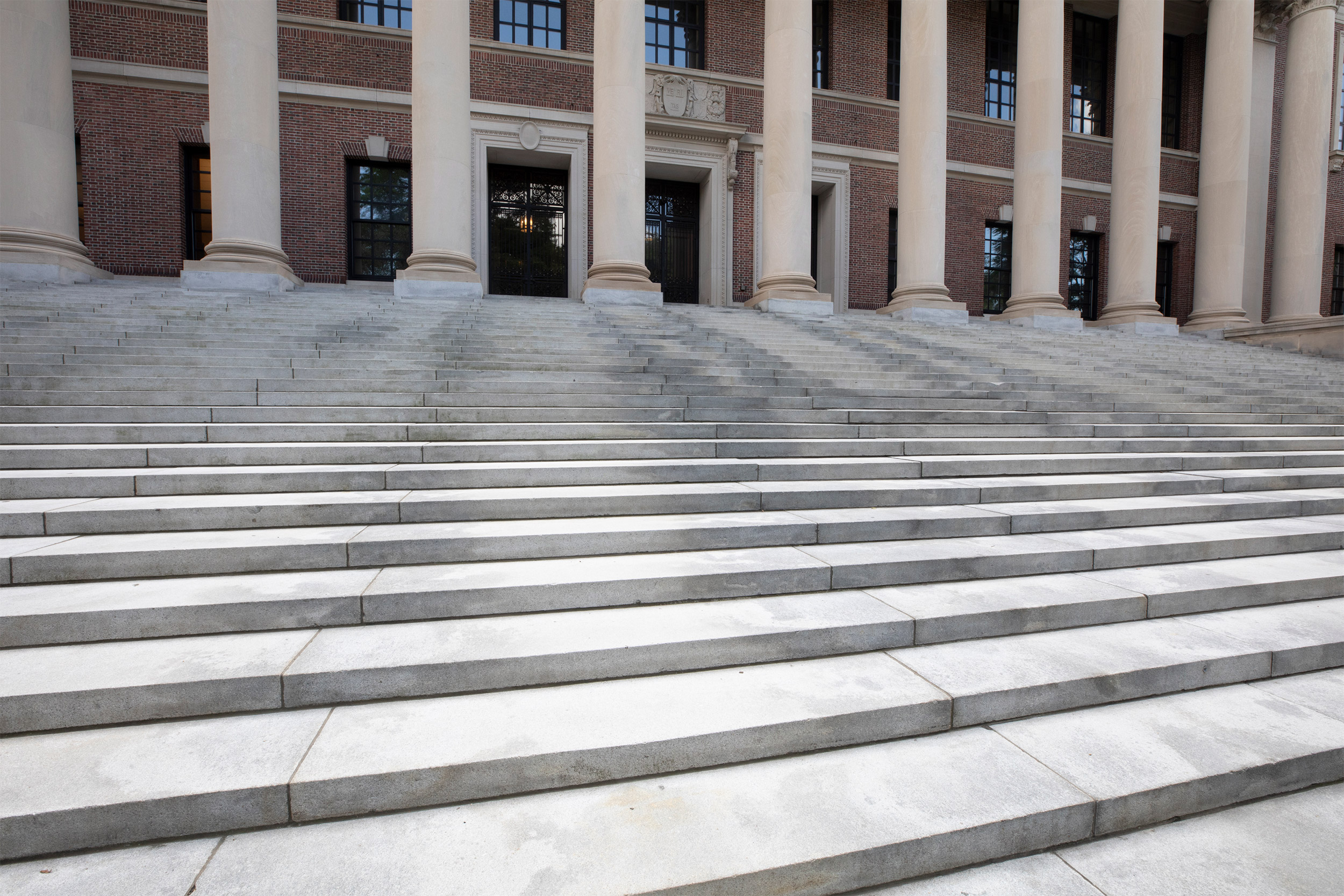
Widener Library in Harvard Yard.
Rose Lincoln/Harvard Staff Photographer
Appeals court hears arguments in admissions case
Plaintiff looks to overturn district court ruling that affirmed Harvard’s policies to ensure a diverse student body
Last fall, U.S. District Court Judge Allison Burroughs ruled that Harvard’s admission policies don’t discriminate on the basis of race, don’t engage in racial balancing or use quotas, and don’t place undue emphasis on race in considering applicants’ admissions files. Burroughs suggested that Harvard couldn’t offer students the benefits of a diverse campus if it stopped considering race in admissions.
On Wednesday, a three-judge panel heard oral arguments in an appeal of that decision by Students for Fair Admissions (SFFA), an organization founded by Edward Blum, the architect of a range of attacks on Civil Rights protections for members of underrepresented minority groups. In its suit, SFFA argued that Harvard discriminated against Asian American applicants.
During the afternoon hearing, which was streamed on audio, the team of judges for the First Circuit Court of Appeals — Chief Judge Jeffrey Howard, Judge Juan Torruella, and Judge Sandra Lynch — frequently cited previous Supreme Court precedent, noting that earlier rulings by the top court have upheld the use of race as one factor in college and university admissions.
“Your argument seems to come down to ‘Harvard must admit based only on academic rating and may not consider anything else,’” Lynch suggested to the plaintiff. “So, can we go back to the law? Harvard can in fact consider other things than merely class ranking and the academic achievement of the Asian American applicants, correct?”
For more than 40 years, the Supreme Court has allowed colleges to consider race as a factor in pursuing diverse student bodies, provided that they do so within prescribed bounds.
In his remarks, Harvard co-lead counsel Seth Waxman ’73 detailed the College’s whole-person admissions process, noting that every applicant’s file is reviewed during a meeting of 40 admissions officers and invited faculty, who look at a range of factors, including grades, essays, personal statements, letters of recommendation, and the narrative analyses of alumni or staff interviewers.
Following the afternoon hearing, Harvard President Larry Bacow reiterated the University’s commitment to diversity in education. “Today’s hearing underscored that we are all more than our numbers — more than our grades, class rank, and test scores,” he said. “Harvard is a special place because each student has something special to contribute to this community. Everyone has their own story and their own unique life experience. We embrace diversity because we learn from our differences.”
Lawyers for SFFA and for the U.S. Justice Department, which filed an amicus brief supporting the plaintiff, reiterated SFFA’s claim that Harvard discriminates against Asian-Americans in its admissions.
A judgment by the federal appeals court could take months, and many legal experts expect the case ultimately to be decided by the Supreme Court.
As part of the day’s proceedings, lawyers addressed the court on behalf of a number of Harvard College students, alumni, and student groups who had offered “friend of the court” testimony during the 2018 trial.
David Hinojosa from the Lawyers Committee for Civil Rights, representing a group of Latinx, Asian American, Black, and Native American prospective and current students and alumni, said his clients understand the importance of admissions programs like Harvard’s in helping to ensure that “remarkable, well-rounded, underrepresented students of color are not overlooked in the admissions process.”
Hinojosa offered the example of Thang Diep ’19, who described in his college essay how he overcame bullying because of his accent and embrace of his Vietnamese identity. Hinojosa also cited Sarah Cole ’16, who described in her essay how she became involved in trying to end youth violence after the death of a friend. Both were excellent students, said Hinojosa, and their admissions files reflected academic achievements along with strong personal qualities and lived experiences.
If the SFFA suit is successful, he said, “Their applications would look markedly different, as they and other students of color would not be able to fully convey their strengths and contributions. This is not what the courts intended.”
In their appeal filing in February, SFFA and Blum asked the court “to determine whether Harvard’s use of race is truly exemplary, or whether it violates Supreme Court precedent.”
Harvard’s response filing noted that its admissions process complies with the law. The response also said that, with respect to the trial judge’s factual findings, the appellate court reviews those for clear error, “a bar SFFA makes no serious effort to meet.”
“Among other factual findings, the court found that Harvard evaluates each applicant as an individual; that it considers an applicant’s race only for highly qualified applicants and as one of many factors; that it does not employ quotas; and — critically — that it does not harbor any discriminatory intent. Rather than engage with these factual findings, SFFA largely ignores or misstates them,” the Harvard brief said.
In the lead-up to the hearing, Civil Rights advocates and representatives from higher education expressed their support for Harvard’s admissions practices.
“Our country still has a long way to go in confronting racial injustice,” said Sarah Hinger, senior staff attorney with the American Civil Liberties Union’s Racial Justice Program. “The Supreme Court recognized that integrated and inclusive education spaces are critical to creating a more equitable society as recently as four years ago. The challengers in this case are making a bold attempt to upend established law and turn back the clock on diversity in education when we need it most.”
Ted Mitchell, president of the American Council on Education, whose membership includes more than 1,700 colleges and universities, related associations, and other organizations, said, “The district court issued an unambiguous ruling in Harvard’s favor, and we expect the circuit court will do the same. For four decades, the U.S. Supreme Court has consistently upheld the principle that institutions have a compelling interest in student body diversity. It has done so in the face of repeated efforts to slam the door on schools considering race and ethnicity while assembling a talented, diverse student body … Now, more than ever, our country needs its colleges and universities to be unwavering in their commitment to a diverse community of learners.”
Blum has long moved to dismantle race-conscious admissions practices. He was the driving force behind Fisher v. University of Texas, which alleged the university discriminated against white applicants in its admissions. In 2016, the Supreme Court ruled that the school was within its rights to use race as a factor in admissions, upholding decades of legal precedent. In July, SFFA filed another suit targeting the University of Texas, and it has similar litigation pending against the University of North Carolina, Chapel Hill.



